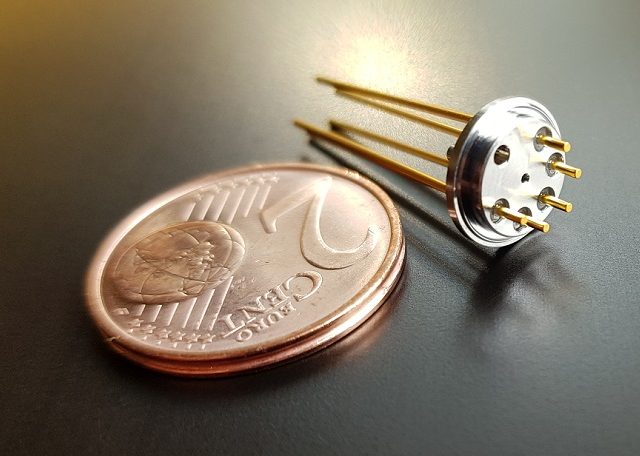Explore Types of Glass-to-Metal Hermetic Seals
Release time:2024-03-26
Introduction
Significance of Different Seal Types:
Different types of hermetic seals offer distinct advantages and are suitable for various applications and environmental conditions. Compression seals, characterized by direct contact between glass and metal surfaces, provide robust sealing performance and mechanical strength, making them ideal for high-pressure and high-temperature applications. Matched seals, where the coefficients of thermal expansion of glass and metal are closely matched, offer excellent thermal stability and reliability, making them suitable for cryogenic and vacuum applications. Graded seals, featuring a gradual transition from glass to metal, provide flexibility and stress relief, allowing them to withstand thermal cycling and mechanical shocks, making them suitable Understanding the significance of different seal types is essential for selecting the most appropriate sealing solution to meet specific performance requirements and environmental challenges.
Compression Seals
Explanation of Compression Seals:
Compression seals are a type of glass-to-metal hermetic seal characterized by direct contact between the glass and metal surfaces. In compression seals, the glass is compressed against the metal substrate under controlled pressure, creating a tight interface that effectively blocks the passage of gases, liquids, and contaminants. This compression is achieved through mechanical means such as clamping, crimping, or brazing, ensuring a secure and durable seal.

Design Principles and Construction:
The design of compression seals is based on the principle of applying sufficient pressure to deform the glass and metal surfaces, creating intimate contact and ensuring a reliable seal. Key design considerations include selecting materials with compatible coefficients of thermal expansion to minimize stress during thermal cycling, optimizing surface finishes to promote bonding, and controlling the compression force to achieve the desired seal integrity. Construction typically involves precision machining of metal components, cleaning and pre-treating surfaces to remove contaminants, and carefully aligning the glass and metal parts before applying pressure.
Applications in Various Industries:
Compression seals find widespread applications across various industries where robust hermetic sealing is required. In the aerospace and defense sectors, compression seals are used in critical components such as pressure sensors, avionics systems, and missile guidance systems, where reliability and performance in harsh environments are paramount. In the automotive industry, compression seals are employed in fuel injection systems, engine sensors, and electronic control units (ECUs), ensuring reliable operation under extreme temperatures and vibration. Additionally, compression seals are used in medical devices, industrial sensors, and telecommunications equipment, where protection against moisture, gases, and contaminants is essential for optimal performance.
Suitability for Different Environmental Conditions:
Compression seals offer excellent sealing performance and mechanical strength, making them suitable for a wide range of environmental conditions. Their robust construction and direct contact between glass and metal surfaces make them highly resistant to thermal cycling, mechanical shocks, and vibration. Compression seals exhibit superior gas-tightness and are capable of maintaining seal integrity under high pressures and temperatures, making them suitable for applications in harsh environments such as aerospace, automotive, and industrial settings. Additionally, compression seals can be customized to meet specific performance requirements, ensuring suitability for diverse environmental conditions encountered in various industries.
Matched Seals
Introduction to Matched Seals:
Matched seals represent a type of glass-to-metal hermetic seal characterized by closely matched coefficients of thermal expansion between the glass and metal components. Unlike compression seals, where direct contact between the glass and metal surfaces is utilized, matched seals are designed to minimize stress and strain caused by differential thermal expansion during temperature fluctuations. This design approach aims to maintain seal integrity and prevent seal failure in environments with significant temperature variations.
Design Principles and Construction Techniques:
The design of matched seals is based on selecting glass and metal materials with compatible coefficients of thermal expansion to minimize stress and strain during thermal cycling. Specialized bonding techniques, such as controlled cooling and annealing processes, are employed to ensure a strong and reliable bond between the glass and metal components. Additionally, the geometry and dimensions of matched seals are carefully optimized to accommodate thermal expansion and contraction, allowing for consistent performance over a wide temperature range.
Key Applications and Industries:
Matched seals find applications in industries and applications where thermal stability and reliability are critical requirements. In the aerospace and defense sectors, matched seals are used in avionics systems, satellite components, and military electronics, where exposure to extreme temperatures and thermal cycling is common. Similarly, in the automotive industry, matched seals are employed in engine sensors, exhaust systems, and electronic control units (ECUs), where reliable operation under harsh environmental conditions is essential. Matched seals are also utilized in medical devices, scientific instruments, and telecommunications equipment, where precision and stability are paramount.
Advantages and Limitations:
The primary advantage of matched seals lies in their ability to maintain seal integrity and prevent seal failure in environments with significant temperature variations. By closely matching the coefficients of thermal expansion between the glass and metal components, matched seals offer superior thermal stability and reliability compared to compression seals. However, matched seals may be more challenging to manufacture and require specialized materials and bonding techniques, which can increase production costs. Additionally, the design and performance of matched seals may be limited by the availability of materials with compatible coefficients of thermal expansion, constraining their applicability in certain industries and applications.
Graded Seals
Graded seals represent a sophisticated type of glass-to-metal hermetic seal characterized by a gradual transition from glass to metal, typically through a series of intermediate materials with varying coefficients of thermal expansion. Unlike compression seals and matched seals, which rely on direct contact or closely matched coefficients of thermal expansion, graded seals are designed to provide stress relief and accommodate differential thermal expansion between the glass and metal components. This gradual transition minimizes stress concentrations and enhances seal reliability in environments with significant temperature variations.
Design Principles and Gradation Techniques:
The design of graded seals is based on carefully selecting and optimizing the composition, geometry, and placement of intermediate materials to achieve a smooth and gradual transition from glass to metal. Various gradation techniques, such as using alloys with intermediate coefficients of thermal expansion, incorporating interlayers with controlled porosity, or utilizing compliant materials with tunable properties, are employed to tailor the thermal expansion characteristics of graded seals. Additionally, advanced bonding and joining techniques, such as diffusion bonding and transient liquid phase bonding, are utilized to ensure a strong and durable bond between the glass and metal components.
Applications Across Industries:
Graded seals find applications across a wide range of industries and applications where reliable hermetic sealing is required in environments with significant temperature fluctuations. In the aerospace and defense sectors, graded seals are used in critical components such as optical systems, cryogenic equipment, and propulsion systems, where thermal stability and reliability are essential. Similarly, in the automotive industry, graded seals are employed in exhaust systems, turbochargers, and engine sensors, where exposure to high temperatures and mechanical stresses is common. Graded seals are also utilized in medical devices, industrial sensors, and telecommunications equipment, where precision and stability are critical requirements.
Comparative Analysis of Performance:
Graded seals offer several advantages over compression seals and matched seals, including enhanced thermal stability, stress relief, and reliability in environments with significant temperature variations. The gradual transition from glass to metal minimizes stress concentrations and prevents seal failure due to differential thermal expansion, resulting in improved performance and longevity. However, graded seals may be more complex to design and manufacture compared to compression seals and matched seals, which can increase production costs and lead times. Additionally, the performance of graded seals may be influenced by factors such as material selection, gradation techniques, and environmental conditions, requiring careful consideration and optimization to ensure optimal performance in specific applications.
Comparative Analysis: Assessing Suitability and Performance
Comparison of Compression, Matched, and Graded Seals:
1.Compression Seals:
Direct contact between glass and metal surfaces Robust sealing performance and mechanical strength Suitable for high-pressure and high-temperature applications May experience stress concentration and seal failure under thermal cycling
2.Matched Seals:
Coefficients of thermal expansion closely matched between glass and metal Superior thermal stability and reliability compared to compression seals Ideal for environments with significant temperature variations Challenging to manufacture and may require specialized materials and bonding techniques
3.Graded Seals:
|
Factors Influencing Seal Selection |
|
|
Environmental Conditions: |
Consideration of temperature variations, pressure levels, and exposure to chemicals or contaminants. |
|
Performance Requirements: |
Assessment of sealing performance, reliability, longevity, and compatibility with system components. |
|
Industry Standards and Regulations: |
Compliance with industry-specific standards and regulations governing hermetic sealing. |
|
Manufacturing Constraints: |
Evaluation of manufacturing capabilities, material availability, and cost considerations. |
|
Application-Specific Considerations: |
Understanding of unique application requirements, such as size constraints, vibration resistance, and integration with other components. |
Performance Considerations in Different Environments:
High-Temperature Environments:
Compression seals may experience stress concentration and seal failure, while matched seals offer superior thermal stability. Graded seals provide stress relief and enhanced performance in high-temperature environments.

Cryogenic Environments:
Matched seals are well-suited for cryogenic applications due to their thermal stability, while graded seals offer flexibility and reliability in extreme temperature fluctuations.
Harsh Chemical Environments:
Compression seals may degrade under exposure to corrosive chemicals, whereas matched and graded seals with corrosion-resistant materials offer better performance. Mechanical Stresses: Graded seals provide superior resistance to mechanical stresses and thermal cycling compared to compression and matched seals, making them suitable for demanding mechanical environments.
Understanding the comparative strengths and limitations of compression, matched, and graded seals is essential for selecting the most appropriate sealing solution to meet specific performance requirements and environmental challenges in various applications and industries.






